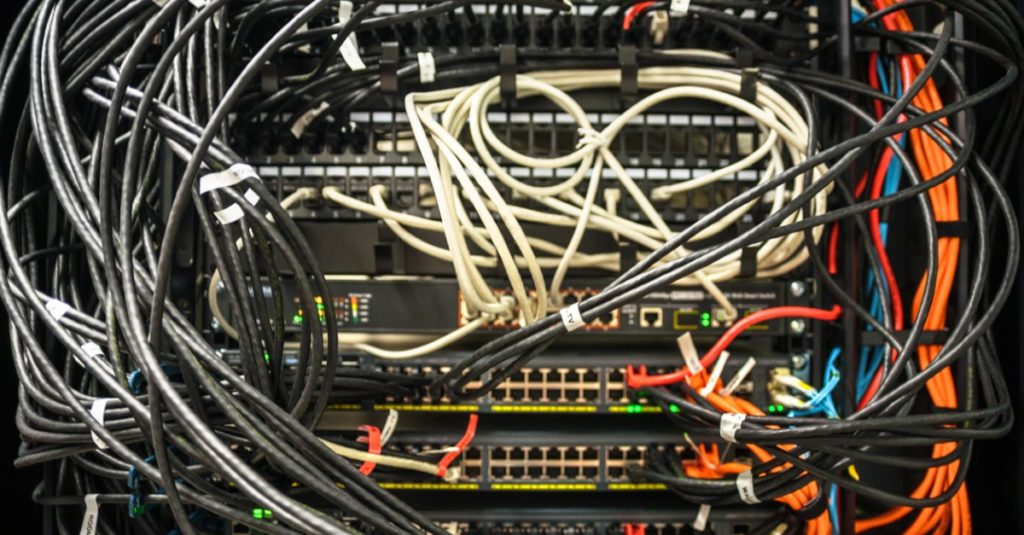Network traffic has surged due to the global pandemic and with companies extending work-from-home arrangements indefinitely (and in some cases permanently), network traffic will probably never return to its former predictable levels.
The need for network agility and the ability to make changes quickly is helping fuel the growth of network virtualization. A virtualized network is provisioned (and can be changed) independent of the hardware, which saves time, resources, and money.
Hardware-based Networks (or, Life before Virtualization)
Hardware-based networks require dedicated hardware for each network function, such as routers and firewalls. To make changes, broadband providers have to manually update each hardware appliance. This laborious process can take weeks (and even months) when rolling out new services, particularly if network appliances are at remote locations. These slow and manual processes are also prone to errors.
The bottom line…legacy networks suffer from inflexible dedicated hardware. This hampers workload mobility, changes to network capacity, and costs.
Workload Mobility
Traditional networks tie workloads to physical network hardware. Unfortunately, this restricts workloads and apps to individual network subnets. To reach the desired resources, network administrators may have to complete appliance-by-appliance configuration of routing, switching, and firewall rules. Obviously, this is a slow and inefficient process in today’s dynamic environment.
Network Capacity

The COVID-19 pandemic has caused broadband providers to experience unprecedented growth in network traffic. This is due to the increased use of bandwidth stemming from the rise in remote workers and distance learning.
Unfortunately the traditional networking model of increasing capacity by adding physical network appliances such as routers and other proprietary equipment is not keeping pace with these demands. And upgrading legacy hardware infrastructure adds a tremendous amount of cost and complexity.
What About the Costs?
The costs of purchasing, installing, and configuring hardware appliances is high. In addition, the significant upfront costs and limited scalability of dedicated hardware force many broadband providers to buy more hardware than they need (overprovision), to ensure they can meet peak traffic periods in the future. This not only creates unnecessary costs, but it also means traditional networks are underutilized since they’re built for peak demand at every location. And for high availability, broadband providers need to buy even more hardware.
Operational expenses (OpEx) are also high. Managing, configuring, and upgrading individual hardware appliances is a manual, labor-intensive process. Naturally, this drives up costs. And manual processes lead to errors, which creates even more costs.
There is a Better Way: Network Virtualization
Network virtualization decouples network functions from the underlying hardware, so broadband providers don’t need dedicated hardware for each network function. Instead, network functions are packaged as software running on virtual machines (VMs) or containers.
With networking resources decoupled from the physical infrastructure, you don’t have to touch the underlying hardware whenever you add or update new services. As a result, virtualization enables providers to add additional network capacity quickly. With a virtual (software-based) network, service providers can scale up available bandwidth capacity with a few simple commands. Launching a new service on a hardware-based legacy network could take weeks or months. On a virtual network, it takes minutes to make a change.
Workload mobility is also enhanced. Since network functions are no longer tied to dedicated hardware, they can be moved around the network to best meet the needs of the business.
As we previously mentioned, hardware-centric networks come with high CapEx and OpEx costs. In contrast, virtual network functions run on commodity x86 servers, lowering costs and eliminating vendor lock-in. For example, customers using netElastic’s virtual broadband network gateway (vBNG) have saved up to 70% in costs compared to hardware-based BNGs.
Network Agility is the Real Prize

While moving to network virtualization will help broadband providers lower costs, creating a more agile network may be the real prize. By virtualizing network functions, providers can transition to an architecture that is more agile and can make changes in real-time. A software-based network enables providers to deploy services at much faster rates than can be done with traditional hardware-based networks.
In summary, network virtualization enables the intelligence of the network to move from hardware to software. As a result, virtualization helps transform networks from inflexible, inefficient, and costly, to agile, dynamic, and cost effective. To learn more about an industry-leading virtual network function, please read the white paper: Next Generation Virtual BNGs – Is Your Broadband Network Ready?

